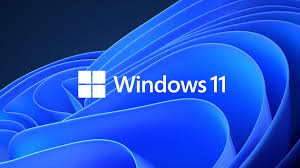Microsoft's Windows 11 operating system offers a range of new features and improvements, but not all devices are compatible. To ensure a smooth upgrade experience, it's essential to assess your desktop computer's hardware capabilities and consider potential upgrades. This white paper will guide you through the process of determining your computer's compatibility with Windows 11, identifying potential upgrade paths, and providing practical tips for a successful upgrade.
White Paper: Upgrading Your Desktop for Windows 11
Introduction
Microsoft's Windows 11 operating system offers a range of new features and improvements, but not all devices are compatible. To ensure a smooth upgrade experience, it's essential to assess your desktop computer's hardware capabilities and consider potential upgrades. This white paper will guide you through the process of determining your computer's compatibility with Windows 11, identifying potential upgrade paths, and providing practical tips for a successful upgrade.
Minimum System Requirements for Windows 11
Microsoft has outlined specific hardware requirements for Windows 11:
- Processor: 1 gigahertz (GHz) or faster, with 2 or more cores on a compatible 64-bit processor or1 System on a Chip (SoC).
- Memory (RAM): 4 gigabytes (GB).
- Storage: 64GB2 or larger storage device.
- System firmware: UEFI, Secure Boot capable.
- TPM: Trusted Platform Module (TPM) version 2.0.3
- Display: High-definition (720p) display,4 8-bit color.
- Graphics card: Compatible with DirectX 12 or later with WDDM 2.x driver.
- Internet connection: Required for initial setup and some features.
Checking Your Desktop's Compatibility
- Microsoft's PC Health Check App:
- Download and run the PC Health Check app from the Microsoft Store.
- It will assess your device's hardware and software to determine compatibility.
- If your device doesn't meet the requirements, it will provide specific reasons.
- Manual Check:
- Processor: Check your processor's specifications to ensure it's a 64-bit processor with a minimum clock speed of 1 GHz.
- RAM: Ensure your desktop has at least 4GB of RAM.
- Storage: Verify that your storage device is at least 64GB.
- TPM 2.0: Use a tool like "tpm.msc" in Windows to check for TPM 2.0.
- Secure Boot: Check your BIOS settings to enable Secure Boot.
- Graphics Card: Verify that your graphics card is compatible with DirectX 12.
Potential Upgrade Paths
If your desktop doesn't meet the minimum requirements, consider the following upgrade options:
- Processor Upgrade:
- Compatibility: Ensure the new processor is compatible with your motherboard and BIOS.
- Thermal Considerations: Upgrade your cooling system if necessary.
- RAM Upgrade:
- Compatibility: Check your motherboard's maximum supported RAM and the type of RAM it supports (DDR4, DDR5).
- Installation: Follow the manufacturer's instructions to install the new RAM modules.
- Storage Upgrade:
- SSD Upgrade: Replace your hard drive with a solid-state drive (SSD) for faster boot times and better performance.
- Additional Storage: Add an additional SSD or hard drive to increase storage capacity.
Additional Considerations
- Driver Compatibility: Ensure that all your device drivers are compatible with Windows 11.
- Software Compatibility: Check if your existing software is compatible with Windows 11.
- BIOS Update: Update your BIOS to the latest version to improve compatibility and security.
Conclusion
By carefully assessing your desktop's hardware and software, you can determine its compatibility with Windows 11. If necessary, upgrading certain components can help you meet the minimum requirements and enjoy the benefits of the new operating system.
References:
- Microsoft's Official Windows 11 Specifications: https://www.microsoft.com/en-us/windows/windows-11-specifications5
- PC Health Check App: https://support.microsoft.com/en-us/windows/how-to-use-the-pc-health-check-app-9c8abd9b-03ba-4e67-81ef-36f37caa78446
- Intel ARK: https://www.intel.com/content/www/us/en/ark.html
- AMD Product Specifications: https://www.amd.com/en/products/specifications.html
Note: This white paper provides a general guide. Specific compatibility and upgrade procedures may vary depending on your hardware and software configuration. Always consult the manufacturer's documentation and seek professional assistance if needed. Contact keencomputer.com
